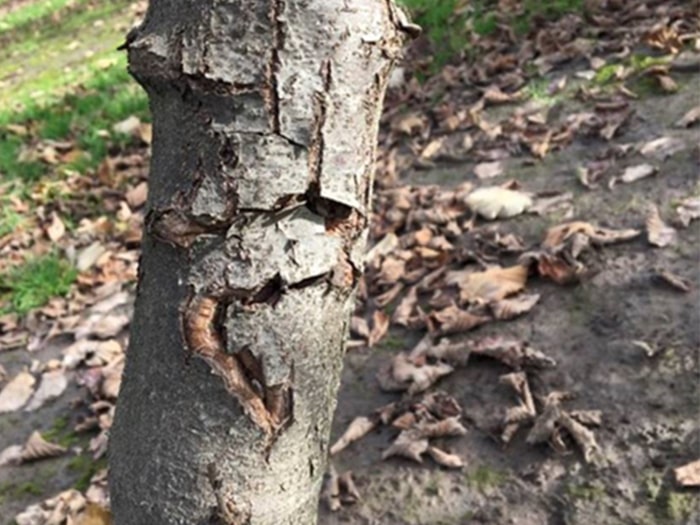Hazelnut Growers of Oregon
Flatheaded Borer Cultural & Chemical Control
The Pacific flatheaded borer is a pest that has been around for many decades in the fruit tree and nursery industries. With so many young plantings going in over the last ten years, the pest has begun attacking young hazelnut trees. It is usually only a problem in years 1-3 and damage is sporadic.
The pest has distinct life stages. Most of its life is spent in the wood of the tree as larvae eventually transitioning into adult beetles in early summer (June and July). They mate and lay eggs on new trees, creating another generation of larvae that damage cambium and often kill trees by girdling. The most important thing you can do to limit borer activity is to limit stress to your trees.
Borers are specifically attracted to damaged trees and we see them most often where there is sunburn, mechanical damage (what we call tractor blight), or rodent damage. Make sure to paint your trees after removing tree guards and keep your trees healthy with proper irrigation and fertility. Chemical control is not well understood, but several options are available to us.
Advise (Imidacloprid) can be applied as a soil drench in spring prior to the rain letting up. This product pulls up from the roots and provides control as the new larvae feed, lasting in the tree for multiple months. The other product is Lorsban (Clopyralid) which is a contact only. This must be targeted to when the adults are emerging, or when they are returning to lay eggs later in the summer.
Contact your agronomist about a control plan and monitor for affected trees. You can find them now in your orchards if they are present overwintering in the wood, look for dead or damaged trees. Affected trees should be cut below the borer damage and burned. Often letting a sucker grow can rejuvenate a tree faster than planting a new tree.
For more information about flatheaded borer, click here.
